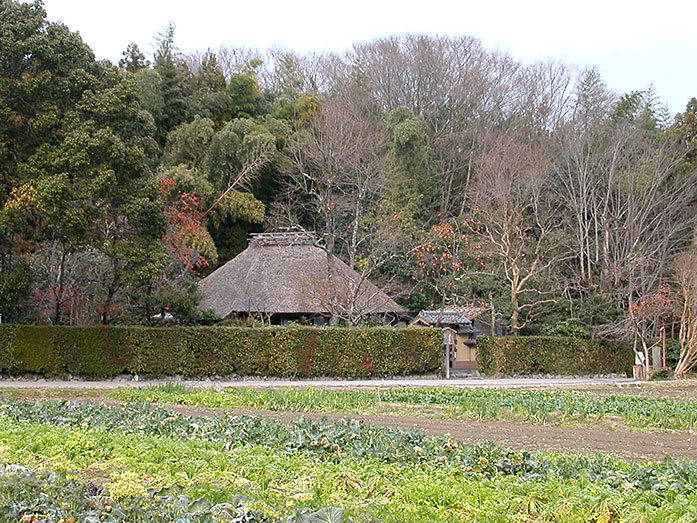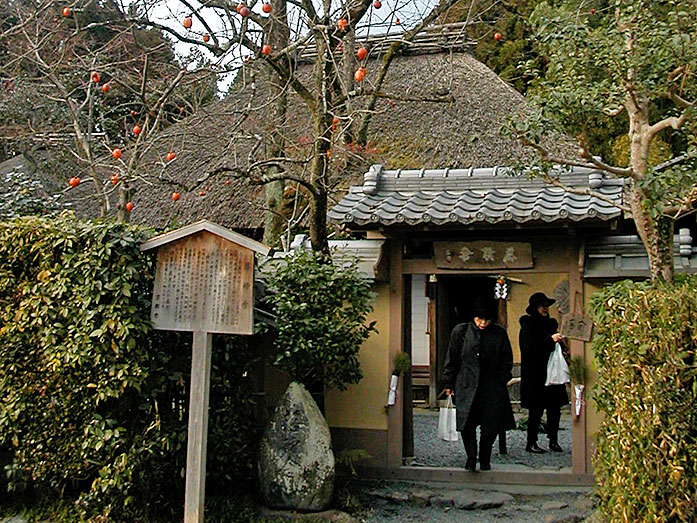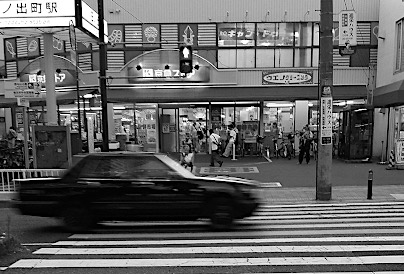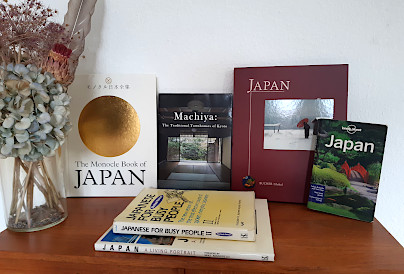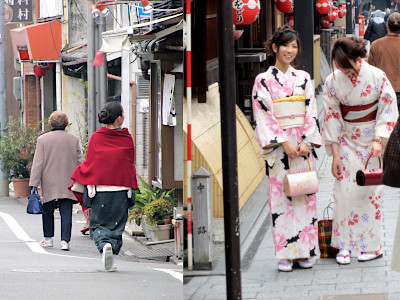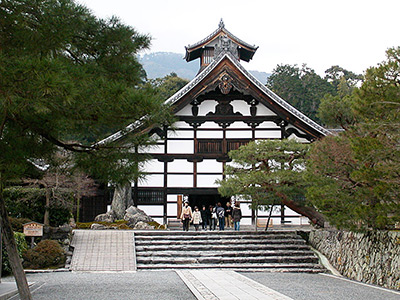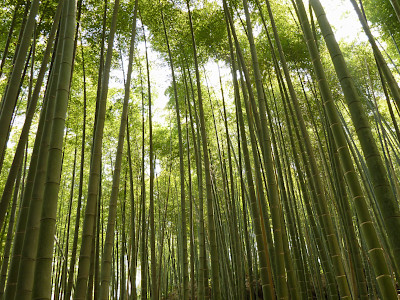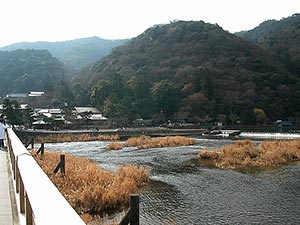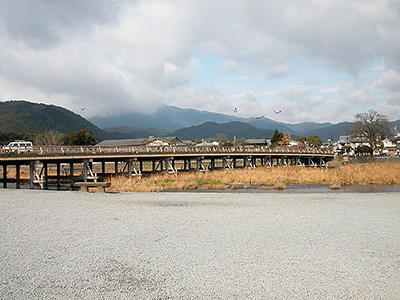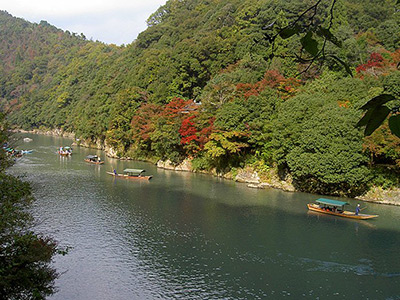Rakushisha Residence in Arashiyama in Kyoto
This post can contain affiliate links, which means that we may receive a small commission if you make a purchase using these links.
Facts & Figures
Rakushisha (literally "Hut of Fallen Persimmons") was home of poet Mukai Kyorai (1651 – 1704), a close disciple of the great poet and haiku master Matsuo Basho (1644 – 1694). Rakushisha Residence is famous in the world of haiku (traditional Japanese poetry).
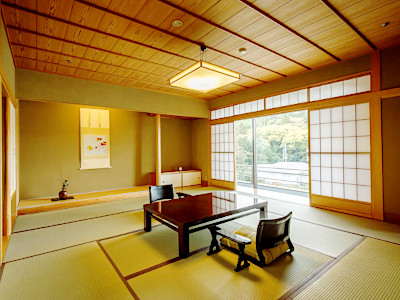 Explore Ryokans in Kyoto >
Explore Ryokans in Kyoto >
Ryokans are the perfect way to discover old Japanese culture and traditions.
The construction materials of the cottage are very simple. Clay was used for the walls and the roof is made out of thatch. The building contains only a few rooms and a small kitchen. Look out for stone slabs in the garden with haiku from Matsuo Basho and Mukai Kyorai engraved on them. At this property Basho wrote in 1691 his famous Saga Nikki (Saga Diary).
- Rakushisha Residence:
- Opening Hours: - 10:00 am to 4:00 pm (January to February)
- Opening Hours: - 9:00 am to 5:00 pm (rest of the year)
- Closed: - 31st of December and 1st of January
- Admission fee - 200 yen (Adults), free (Children)
My tips for local activities
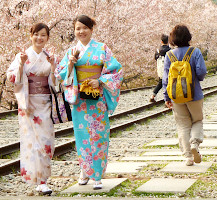
How about exploring the best parts of my favourite city Kyoto with a local guide? The personalized tour by our partner GetYourGuide can take between 2 - 8 hours. For more details check out this page >
History
When Mukai Kyorai, the son of a wealthy physician from Nagasaki, turned 27 he went into seclusion and decided later to built this residence. There is this interesting story that after a very stormy night Mukai Kyorai woke up in the morning and saw that on his property nearly all persimmons had been fallen from the in total 40 trees. At this moment he decided to call his place Rakushisha - Hut of Fallen Persimmons. His master Basho visited him 3 times at this place. During one of his stays he wrote this famous haiku:
summer rain
on the wall traces
of torn poem cards
After the death of Kyorai, the Rakushisha Residence became uninhabitable and was destroyed in 1704. In 1770 followers of Kyorai rebuilt the cottage.
Location

Rakushisha is located within Arashiyama district in the western outskirts of Kyoto.
Address: 20 Hinomyojin-cho Ogurayama Saga Sakyo-ku, Kyoto
How to get to Rakushisha?
- 15min from Kyoto Station to Saga-Arashiyama Station by JR Sagano Line and
- 15min from Saga-Arashiyama Station to Rakushisha
Sightseeing spots
Top:
inside the house - the walls are covered with ink-brushed poems and on the floor you will find stone tablets with haiku inscribed
thatched-roof - the roof was assembled without using any nails
Grave of Mukai Kyorai - the tomb is located near the property at the Kogen-ji temple grounds - a sub temple of Tenryu-ji
Festival & Events (dates can change without notice)
February
Setsubun (3rd)
One day before spring arrives (lunar calendar) the Setsubun is celebrated. Bean throwing (Mame maki) ceremonies are held at the shrine to get a good fortune for the year. Do not miss the bonfire on the evening.
April
Miyako Odori (1st - 31th)
The traditional annual spring dance of the Kyoto district Gion Kobu performed by Geiko and Maiko is a must-see on your Kyoto visit. Don't miss the most popular dances the Miyako Odori "Cherry Blossom Dances" or "Dances of the Old Capital" at the Gion Kobu Kaburenjo Theater (located close to Gion Corner).
May
Ochatsubo Dochu (1st)
The Ochatsubo Dochu or Traveling Tea Canisters festival dates back to the Edo Period. It represents the practice of showing the new tea harvest from Uji to the ruling shogun in the old days. Now during the parade large ceramic containers with tea are carried by people wearing traditional costumes from Kenninji Temple to Yasaka Shrine.
Aoi Matsuri (15th)
The highlight of this festival is a large parade from Imperial Palace through Shimogamo Shrine to the Kamo Shrines. More than 500 people wearing aristocratic costumes from the Heian Period (794 - 1185). The Aoi Matsuri belongs with the Gion Matsuri and Jidai Matsuri to the three most famous festivals in Kyoto.
July
Gion Matsuri (whole month)
The month July is full of different events like the Yoiyama - Kyoto's Magical Night (locals in kimonos look at the giant Gion floats the day before the parade) or the famous Yamaboko Junko (float procession on the 17th of July).
October
Jidai Matsuri ("Festival of Ages") (22nd)
People celebrate with a large parade between Imperial Palace to Heian Shrine the anniversary of the foundation of Kyoto. App. 2000 participants wearing historical costumes from different time periods. Enjoy this great festival which last around 2 hours.
November
Shichi-Go-San (15th)
The well-being and growth of young children is celebrated at the shrine and in the rest of Japan.
Where to stay in Kyoto?
Day trips from Kyoto:
My 100 Best Moments in Japan
I have visited Japan nearly every year since 2004. This is my collection of the 100 best moments in my favorite country. Enjoy the pictures and I hope you will start your own journey soon.
Find out more >
Books about Japan
Reading books is a great source of inspiration for me. Check out my recommended list of books about the fascinating country Japan.
My Book recommendations >

